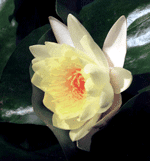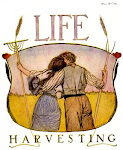"Christians living in Kerala astutely relate the Christ to the Vedic tradition."
Christianity in India is about as old as Christianity itself. In the south, in the Tamil province, especially, the cult of the Christian is especially well developed. In parts of India it easily adopted the Brahminic mode of expression. Syrian Christians living in Kerala engage in casting their horoscopes for example, and astutely relate the life of the Christ to Vedic traditions. In some regard, Christian-ways in these regions are ubiquitous; in turn it gives culture to India.
The deeply imbedded notion of the Avatar inspires many. Through divining the personality of the Christ, Indians see the Christ as something of a Supreme Being, incarnated, come to earth to save mankind. The idea of wrong, of sin is overlooked. In this type of salvation drama, Christ, the Avatar is most appealing. Sabrania Bharati, a Tamil poet of national prominence and a Shakti devotee wrote:
The poet does not mean to give a philosophical view here. Instead he is deeply moved to record his experience in poetry, the song of words. Praising the image of the Christ upon the Cross, he attempts to reconcile this image with the sure knowledge of deep suffering, of passion. Why should there be so much suffering? Is the persecutor Pilate to be the ever source of this suffering? What remains now of godliness, of mercy, of holiness? The heart in ascension rises and opens to the eternal, to hope.
How, muses the poet, shall we coax, the Lord of Hosts to enter our consciousness, making us the carriers of the imperishable Dharma? With Mary Magdalene as love incarnate, love then is the entrailing of the gods to combine the human with Jivatman and Supreme, the Paramatman.
Where love is expressed, smallness falls away; there lives instead the Divine, for God is Love, we learn. The Supreme responds to the sincere strivings of the Human being.
Another Indian of great repute, Sri Aurobindo also felt the indescribable pull towards the imagery of Christ upon the Cross. Affected by the story of The Divine Comedy, Dante who remarks with simple clarity, 'in His will is our peace,' reflects the view of Aurobindo equally himself.
Aurobindo freely engaged the life and gospels of the Christ in his own writings. For Aurobindo, the Christ represented the ideal, the strivings of the One to completeness, to wholeness. The Avatar, he believed, was significant for man's spiritual progress, for his ultimate ascension. In his epic poem, Savitri, he writes about the Christ as Avatar in a step towards human unity.
Christianity in India is about as old as Christianity itself. In the south, in the Tamil province, especially, the cult of the Christian is especially well developed. In parts of India it easily adopted the Brahminic mode of expression. Syrian Christians living in Kerala engage in casting their horoscopes for example, and astutely relate the life of the Christ to Vedic traditions. In some regard, Christian-ways in these regions are ubiquitous; in turn it gives culture to India.
The deeply imbedded notion of the Avatar inspires many. Through divining the personality of the Christ, Indians see the Christ as something of a Supreme Being, incarnated, come to earth to save mankind. The idea of wrong, of sin is overlooked. In this type of salvation drama, Christ, the Avatar is most appealing. Sabrania Bharati, a Tamil poet of national prominence and a Shakti devotee wrote:
My Lord expired on the Cross
and ascended in three days.
Beloved Mary Magdalene
Beloved Mary Magdalene
saw this happen.
Friends! Here's the esoteric sense.
The gods will enter us
and guard us from all ills
Friends! Here's the esoteric sense.
The gods will enter us
and guard us from all ills
if we transcend pride.
Mary Magdalene is Love,
Jesus the Soul.
The outer evil destroyed,
the good life sprouts.
She praised the radiance
Jesus the Soul.
The outer evil destroyed,
the good life sprouts.
She praised the radiance
in that golden face.
That was the love of Magdalene,
That was the love of Magdalene,
ah, what joy!
If Sense is bound to the Cross of Truth,
and crucified with nail austerity,
Jesus of the strengthened soul
If Sense is bound to the Cross of Truth,
and crucified with nail austerity,
Jesus of the strengthened soul
will rise as the boundless sky
Magdalene is Eternal Feminine,
Jesus Christ is deathless dharma,
Draw we close to the symbol:
look, an inner meaning glows.
Magdalene is Eternal Feminine,
Jesus Christ is deathless dharma,
Draw we close to the symbol:
look, an inner meaning glows.
The poet does not mean to give a philosophical view here. Instead he is deeply moved to record his experience in poetry, the song of words. Praising the image of the Christ upon the Cross, he attempts to reconcile this image with the sure knowledge of deep suffering, of passion. Why should there be so much suffering? Is the persecutor Pilate to be the ever source of this suffering? What remains now of godliness, of mercy, of holiness? The heart in ascension rises and opens to the eternal, to hope.
How, muses the poet, shall we coax, the Lord of Hosts to enter our consciousness, making us the carriers of the imperishable Dharma? With Mary Magdalene as love incarnate, love then is the entrailing of the gods to combine the human with Jivatman and Supreme, the Paramatman.
Where love is expressed, smallness falls away; there lives instead the Divine, for God is Love, we learn. The Supreme responds to the sincere strivings of the Human being.
Another Indian of great repute, Sri Aurobindo also felt the indescribable pull towards the imagery of Christ upon the Cross. Affected by the story of The Divine Comedy, Dante who remarks with simple clarity, 'in His will is our peace,' reflects the view of Aurobindo equally himself.
Aurobindo freely engaged the life and gospels of the Christ in his own writings. For Aurobindo, the Christ represented the ideal, the strivings of the One to completeness, to wholeness. The Avatar, he believed, was significant for man's spiritual progress, for his ultimate ascension. In his epic poem, Savitri, he writes about the Christ as Avatar in a step towards human unity.





